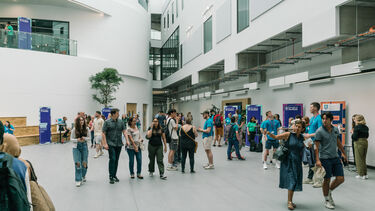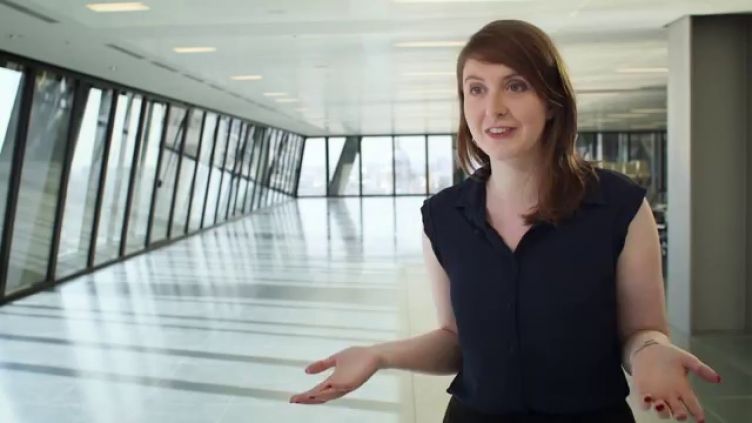It's really exciting to look around the skyline of London and see things like the Leadenhall Building - my first project as a structural engineer.

Watch: Our interview with Catherine
I went to the University of Sheffield and I studied Engineering and Architecture together which is why I particularly chose that course as I couldn’t decide between the two. I knew that I wanted to do something with buildings but I couldn’t decide what. I now work for Arup, which is a multi-disciplinary architecture and engineering practice so now I get to do both so I’m really glad I stuck with it and studied both.
When I first started I was designing a lot of beams and columns but I’ve only been there for two years and I’m already doing things like managing the whole model for a project. My current project is a 35-storey tower in the centre of London and the fact that I’m working really closely with the architects and electrical public health engineers and services means that we can work really fast. I’ve had three projects completed since I started because we do this quick-fire design process which means we’re constantly collaborating and it’s really exciting.
The best thing about being an engineer is definitely seeing my finished projects built in real-life. It’s really exciting to look around the skyline of London and see things like the Leadenhall Building. That was my first ever project as a Structural Engineer and I put so much hard work into designing the structure, it’s really satisfying to point it out to people whenever they’re visiting London.
What I did on the project is called Active Alignment. Because the building has a triangle cheesegrater shape, it actually leans over as you’re building it because the weight of the structure is heavier on one side than the other. What you have to do is to calculate really carefully exactly how much it weighs at each stage of construction so we can look at how much it is trying to lean over in any given direction. In-between the joints of the megaframe, there was small pieces of metal which we could pull out and tighten the structure to pull it back together again to stop it from leaning over.
Whilst I was at the University of Sheffield, I did so much more than just study engineering and architecture. The great Students’ Union allowed me to be part of different societies like the Architeers’ Society which joined architects and engineers, and the Canoe Club. These things gave me the chances to do things like managing money and organising projects. All these skills I find that I am using them in my job today.
We interviewed Catherine in 2016.

Experience Sheffield for yourself
The best way to find out what studying at Sheffield is like is to visit us. You'll get a feel for the atmosphere, the people, the campus and the city.

